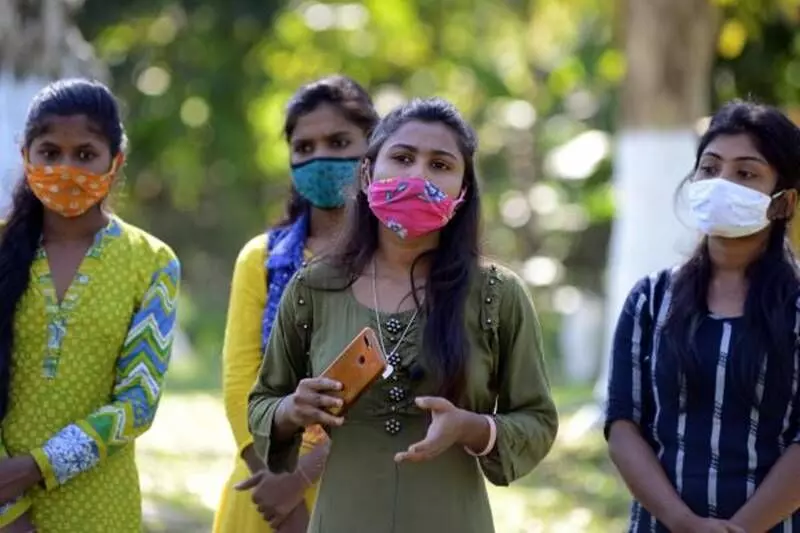A study conducted to assess the impact of the COVID-19 pandemic and the resulting lockdown during the first wave has revealed that 78 per cent of the mothers agreed that it led to hardships for their adolescent daughters in accessing sanitary napkins.
The report titled World of India’s Girls Spotlight on Adolescent Girls amid COVID-19 was published by the global non-profit organisation named ‘Save the Children’ was published today, on March 2.
“Four out five mothers (78 per cent) reported that their adolescent daughters faced difficulties in accessing sanitary napkins during lockdown period owing to limited government supplies, lack of money, and closure of shops,” the report mentioned.
The report also zoomed in on issues that inhibited the girl child in accessing the same opportunities as their male counterparts.
It found that 68 per cent of the surveyed female adolescents did not have access to or receive any health and nutrition services (including interacting with the frontline health workers) during the lockdown.
“During lockdown period, fear of getting infected, closure of schools and health centers, long queues and unavailability of health staff made it difficult for adolescent girls to access health and nutrition services. During the post lockdown period, more than half (51 per cent) of the adolescent girls continued facing challenges in accessing health services,” the report stated.

Two in five mothers (44 per cent) reported that their adolescent daughters felt agitated and anxious during the lockdown period (April to June 2020).
Key Findings:
* One in four (23 per cent) girls did not have access to any type of learning materials at home during the pandemic
* Two in five mothers (44 per cent) reported that their adolescent daughters felt agitated and anxious during the lockdown period (April to June 2020)
* One in two girls (50 per cent) reported that they missed the journey of going and coming back from school with their siblings and friends. Many girls also missed the games period (one in two girls, 46 per cent), library class (two in five girls, 40 per cent), lunch break (one in three girls, 35 per cent) as well as the drawing and painting class (one in three girls, 30 per cent).
* Nine in 10 mothers (92 per cent) shared that they have not come across any awareness building activity around the issues of child marriage during the pandemic.
‘Progress made in ending child marriage could get reversed’
The report mentioned that although the prevalence of child marriage has declined from 74 per cent in 1970 to 27 per cent in 2015 but the progress made so far to eradicate the social evil could soon get reversed as a result of the socio-economic impact of the COVID-19 pandemic.
It stated that job losses and reduced household incomes due to the pandemic have increased the likelihood of child marriages.
“One in seven (14 per cent) mothers felt that the pandemic has increased the risk of early marriage among girls. Girls face greater risk of early marriage than boys as one in two mothers (52.4 per cent) perceive that the chances of girls rather than boys getting married early are higher due to COVID-19,” the report mentioned.
It also pointed out that there is a dearth of awareness about the issue of child marriage.
“About one in ten mothers (10 per cent) believe that the appropriate age of marriage is below 18 years. Nine in ten mothers (92 per cent) shared that they have not come across any awareness building activity around the issues of child marriage during the pandemic,” it added.
The study was conducted in February 2021 in the four states of Delhi, Maharashtra, Bihar, and Telangana representing the four geographical zones (East,West, North and South).
“The states in each zone were selected using a composite measure including metrics such as incidence of COVID-19 , child sex ratio, women getting married before 18 years, annual dropout ratio and women between the ages of 15-24 years using hygienic methods during menstrual cycle,’ the report informed while explaning the methodology of the study.


















